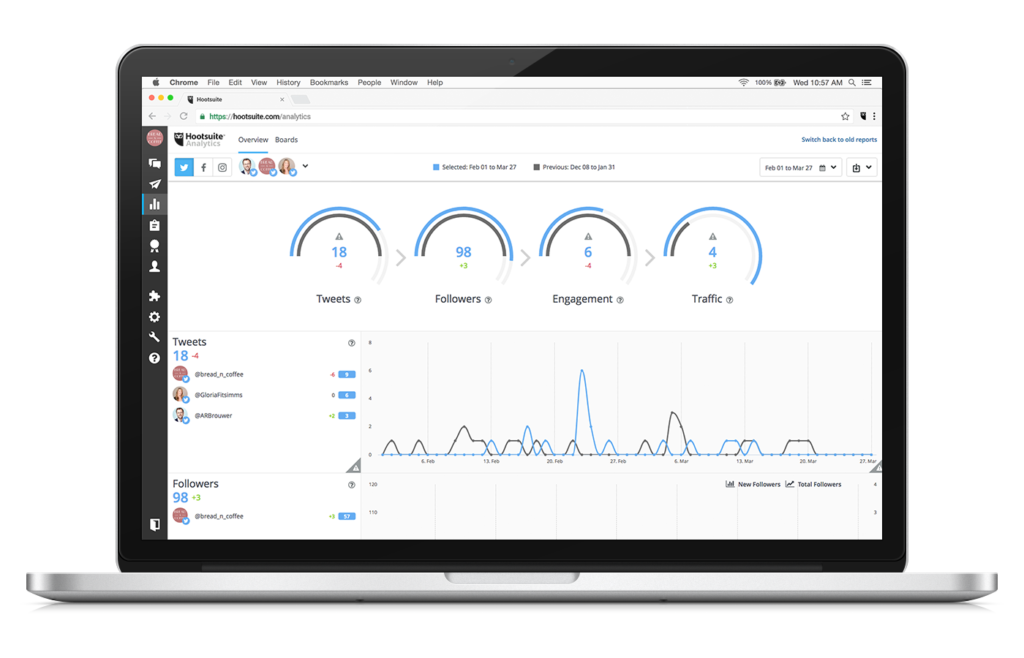Time and money are the most valuable resources for an organisation. So when a business is pumping both of these into social, executives understandably want to see real return on investment (ROI). Without a clear view of the benefits, there is zero justification for the business to continue making efforts within the social media sphere — but bizarrely, many do. In fact, according to our Social Barometer Report, only 33% of UK organisations today measure social ROI.
Social ROI is often misconstrued to be simple vanity metrics. However, a marketing team reporting to executives that a company’s recent Instagram post got 10,000 likes doesn’t necessarily correlate with higher revenue, a reduction in costs or compelling brand differentiation — where real return on investment lies. Proving the real business value of social media initiatives is critical in order to justify campaign efforts and help build a case for further investment.
It’s time to move away from talking about simple social media metrics such as ‘likes’ and ‘shares’, and instead take steps to show the tangible results of social engagement, which not only prove, but also help to improve ROI, when it comes to an organisation’s social media efforts.
Setting objectives
Measuring likes, shares or retweets can be valuable in the right context, but it’s not all there is to track how successful social media initiatives have been. To truly demonstrate the value of social, it’s critical to set objectives that complement existing business and departmental goals. For example, rather than saying “Let’s improve customer service on social media,” set a numerical value and a deadline for this, such as speeding up first response time with customers by ten minutes by the end of the first quarter.
Ultimately, it’s the marketing team’s job to define these business objectives for every marketing channel — including social media. A common mistake is to let social teams create bottom-up metrics. It’s understandable — as higher-level marketing executives don’t work in the weeds of social media algorithms, and the social specialists will always suggest specific metrics to track. But social teams will predictably choose social network focused metrics such as reach, impressions, and engagement. Marketing execs need to be clear that they expect social to help solve tangible business challenges such as beating revenue targets, lowering operational costs, increasing efficiency, differentiating a brand, or increasing customer satisfaction. And then ask the social team to map their social KPIs to the organisation’s objectives.
Track those goals
Next, targets should be set for the social team and get them to start tracking against those goals. These goals should be time-bound with clear targets (such as “social channels are expected to drive 500 signups to our annual conference”). In this phase, marketing executives will be able to see if social strategies are helping to achieve real business outcomes.
For example, if a business goal is to increase customer loyalty, the social team should be tracking metrics like life-time value (LTV) attributable to social content, or average shopping basket transaction value. If the goal is to reduce customer service costs, the social team can quantify call deflection cost savings by answering customer questions and sharing content on social. As these KPIs are mapped to business objectives, it will be easier to keep eyes on that all important bottom line. If top-line sales have slipped, but the social team sends glowing reports of increases in Facebook traffic, it’s easy to see that social tactics and business outcomes have become disconnected. This will call for a redefining of social strategy and metrics to get back on course.
Showcase to show off
There are several ways which marketing teams can really showcase the momentum against hitting these goals and really demonstrate the value of social to those further up the organisation:
- Templates — Creating analytics templates will allow marketing to track their desired metrics without having to build out custom reports for each campaign. These reports will also present the data in a digestible way, allowing marketers to simply and effectively share the company’s ROI in regards to social media with the organisational C-suite.
- No ‘marketing speak’ — Not everyone within the organisation will speak the language of social data as fluently as marketing and social teams, so it’s important to present information as clearly as possible. A good social management platform can help here, turning that data into decipherable insight that will help the entire organisation make sense of its social metrics.
- Check your metrics — On the topic of metrics, marketers should also keep on top of checking their social media numbers frequently to ensure that their goals are being met. The lifecycle of a social media campaign is often very short, so they’ll need to stay on top of the data as it happens, then report it in the right way up the chain.
The results
Once it has been defined what social can help solve, social metrics have been mapped to specific business outcomes, and a clear expectation has been set for social media — it’s time to properly measure the value. Marketers should frame their ROI analysis with three questions: “Did the organisation achieve the business goals you set that social could help solve?” If yes, “What social tactics were successful in helping the company reach those goals?” If no, “How can we tune our social strategy to hit these goals next quarter?”
Establishing objectives, setting goals, choosing metrics, and analysing the results will put senior marketers on the best path for getting real ROI from social — but it won’t always be easy. Organisations might not get it right the first time, and that’s okay. Proving (and growing) the ROI of social is an iterative process that should continuously be refined, even when marketers have it down to a science. The realm of social media is of course an evolving and changing space, so there’s always more to learn, more to test — and more to gain.






